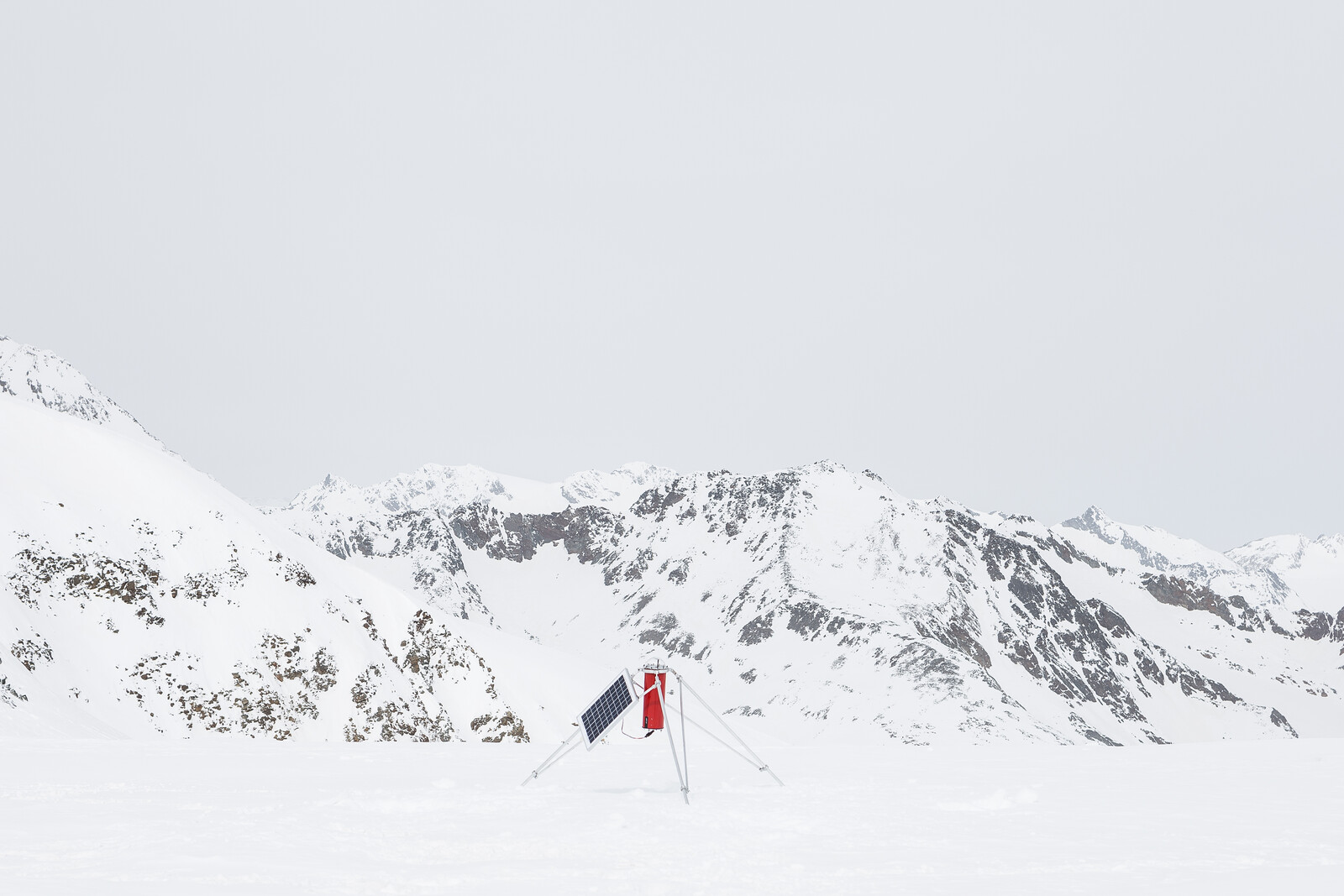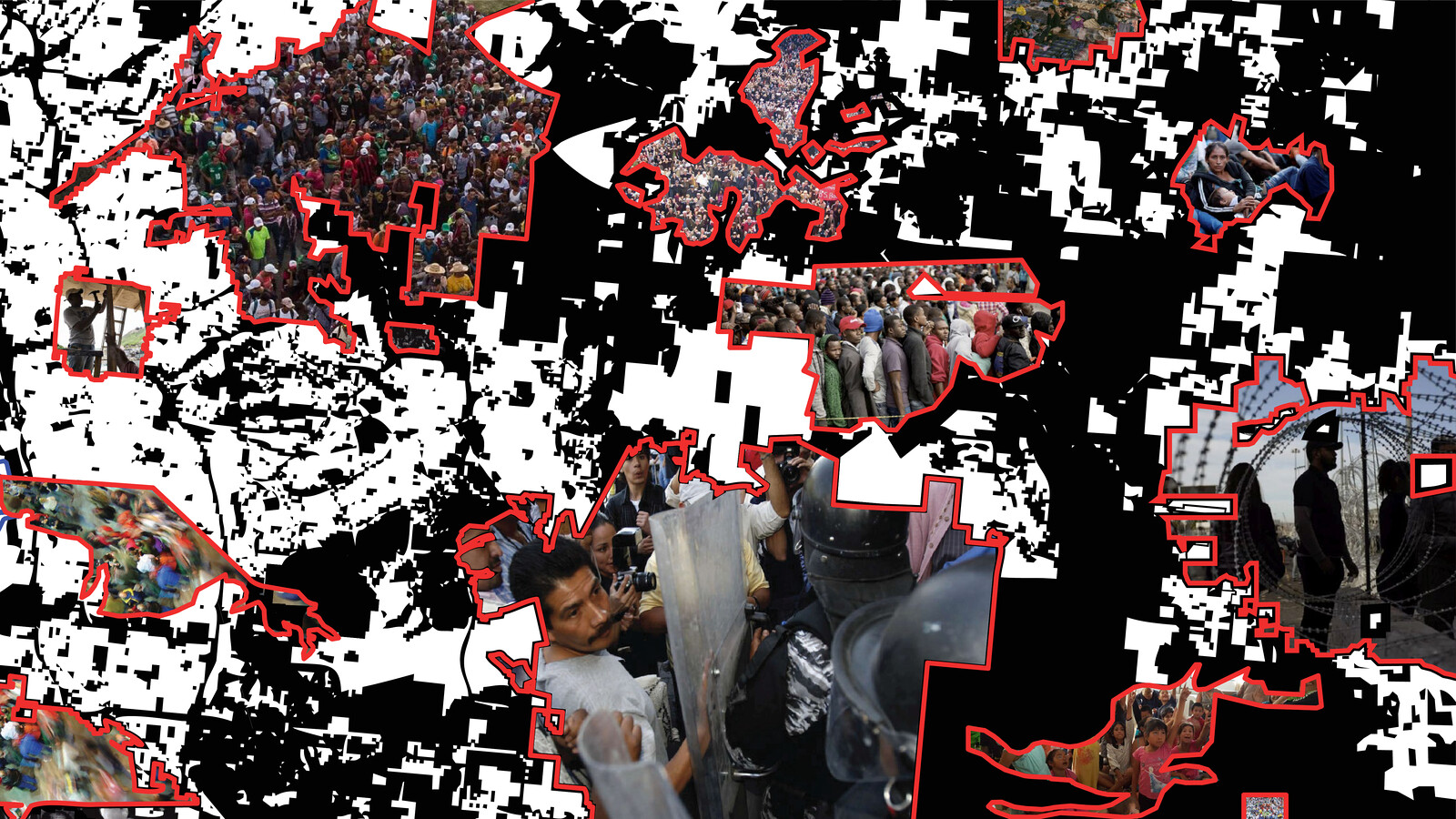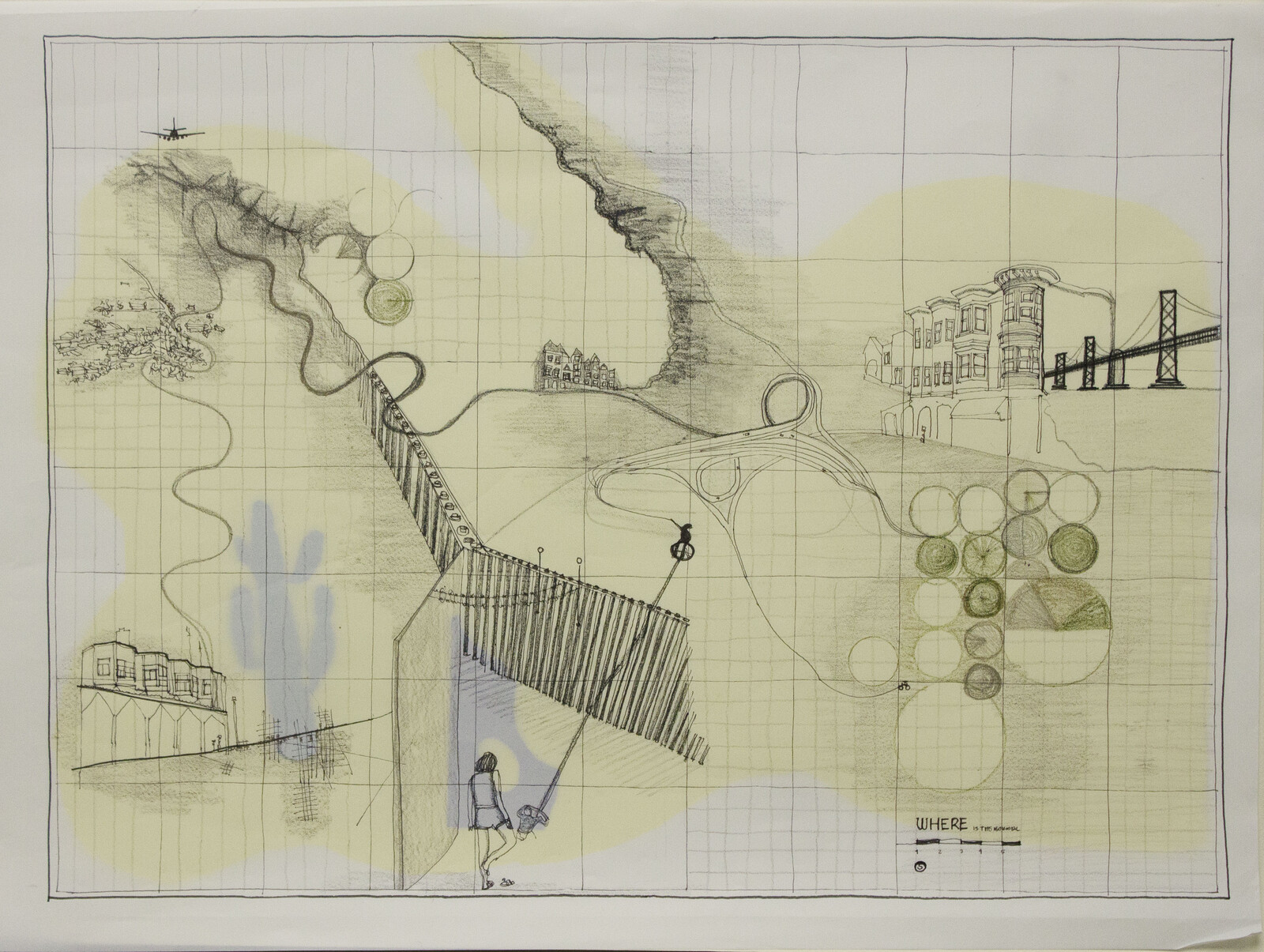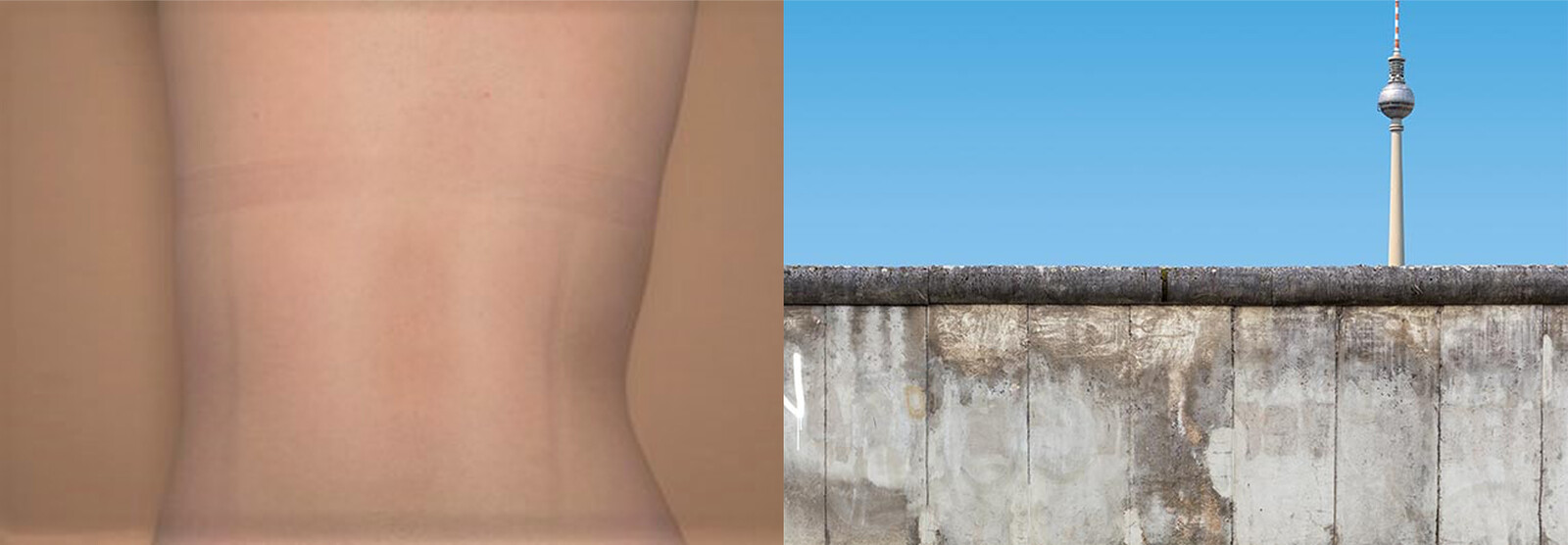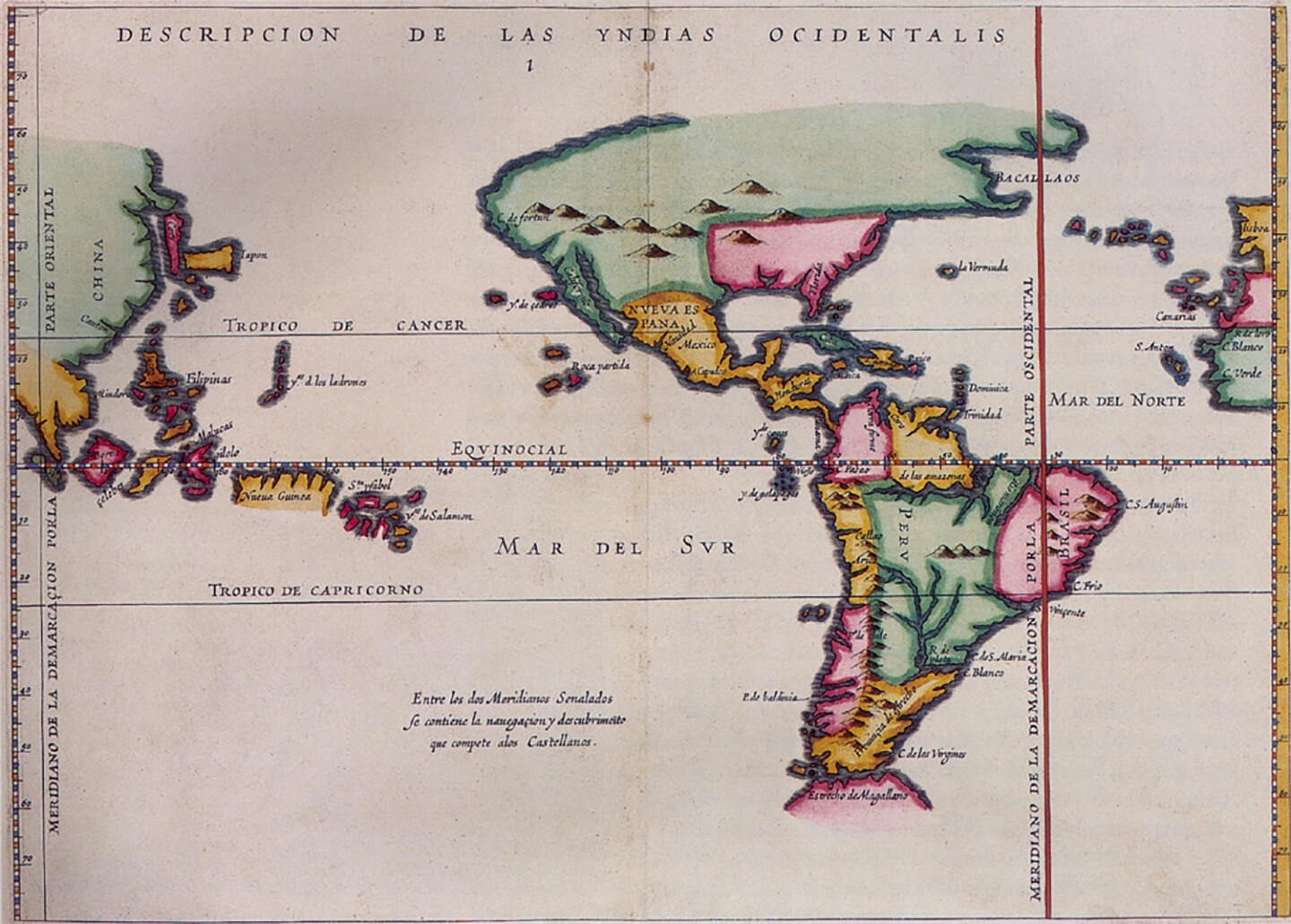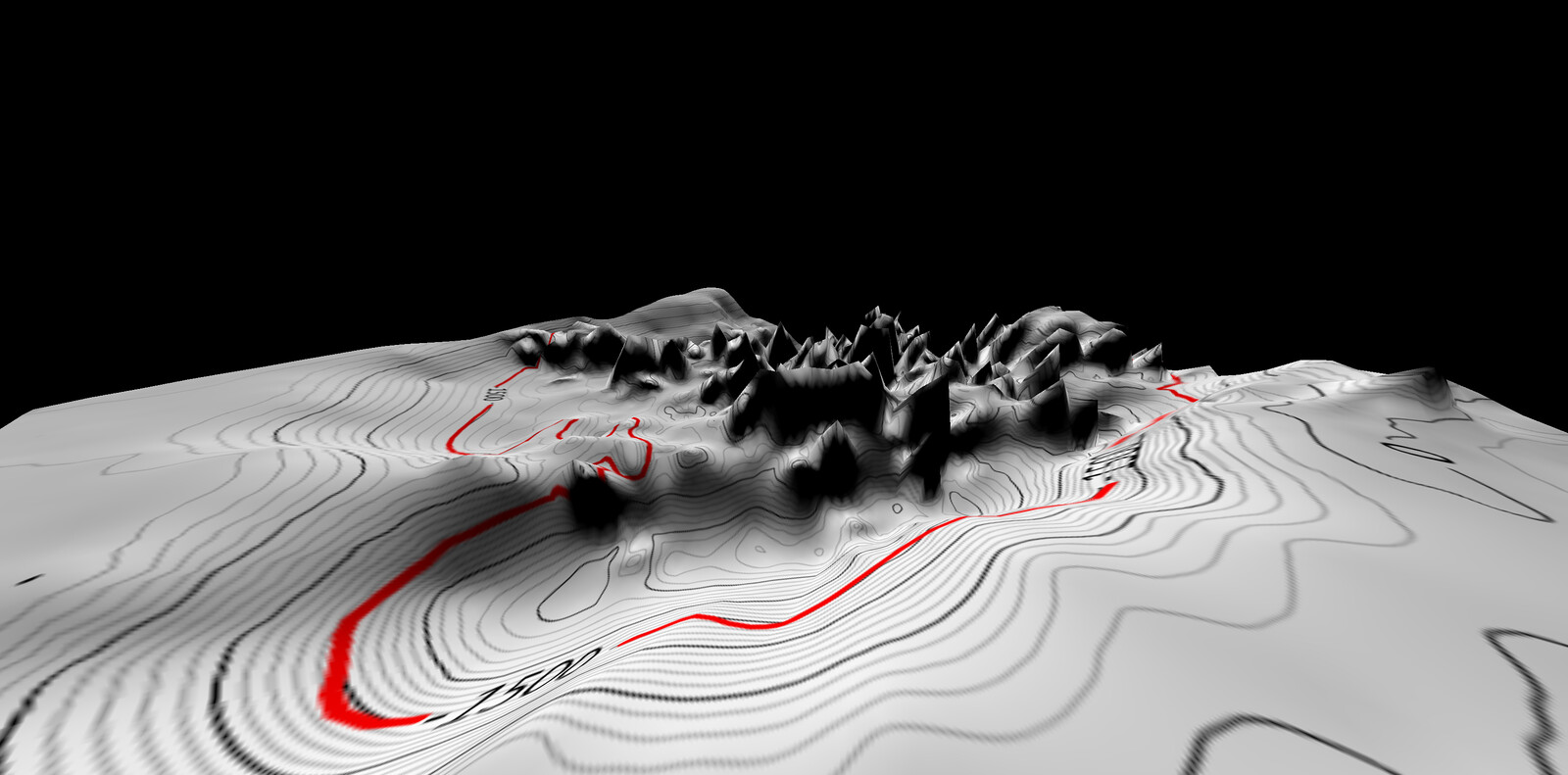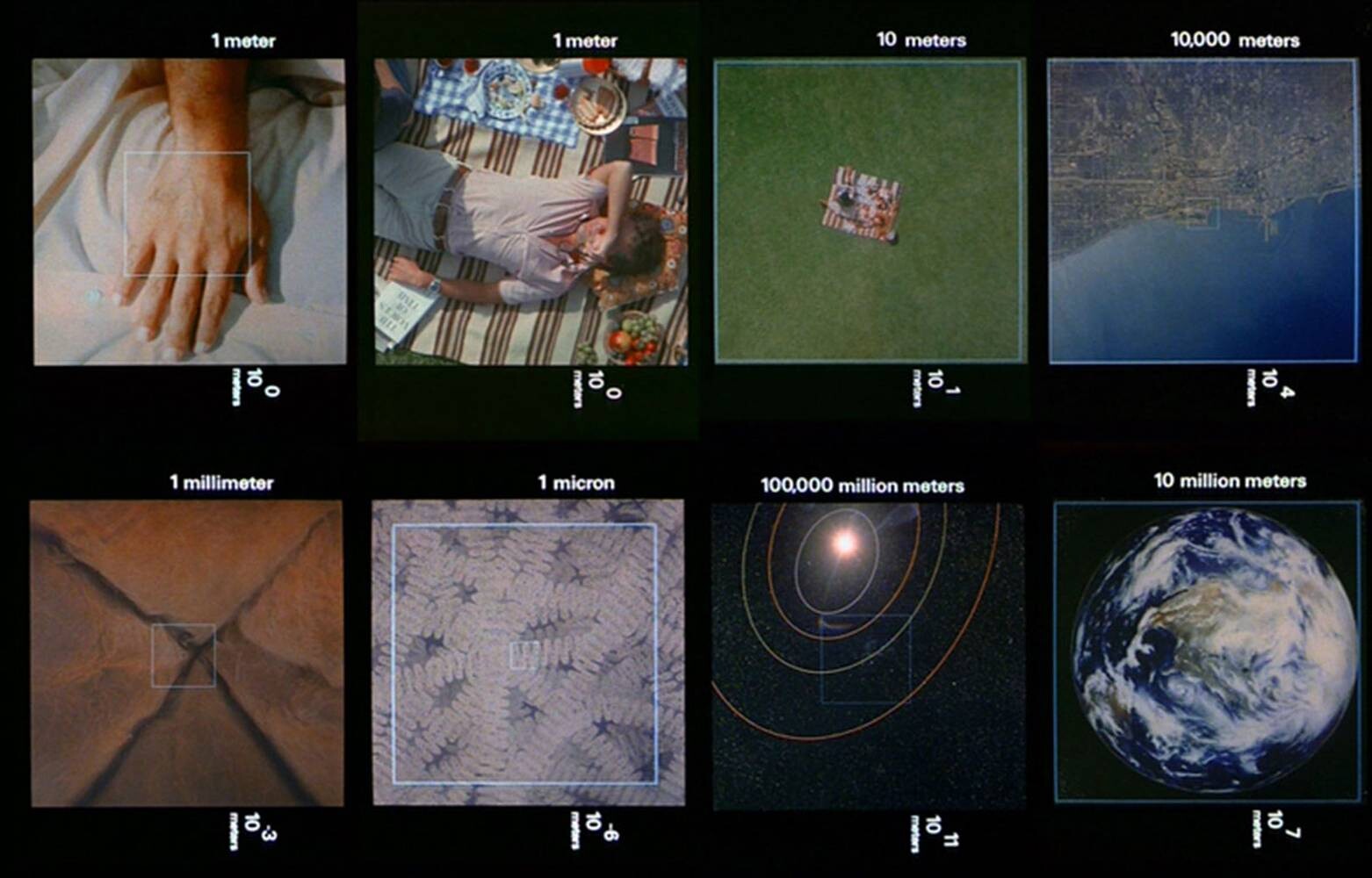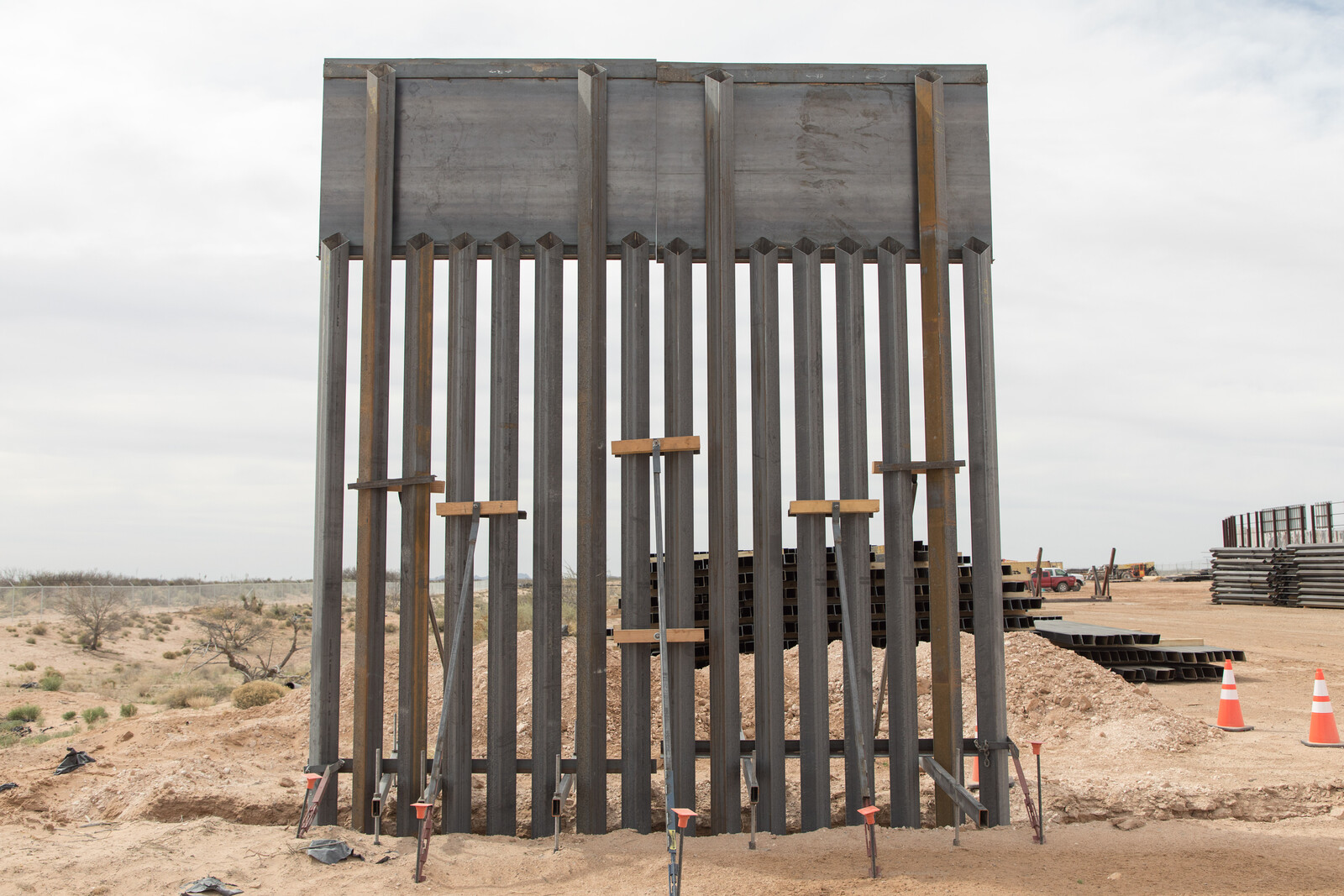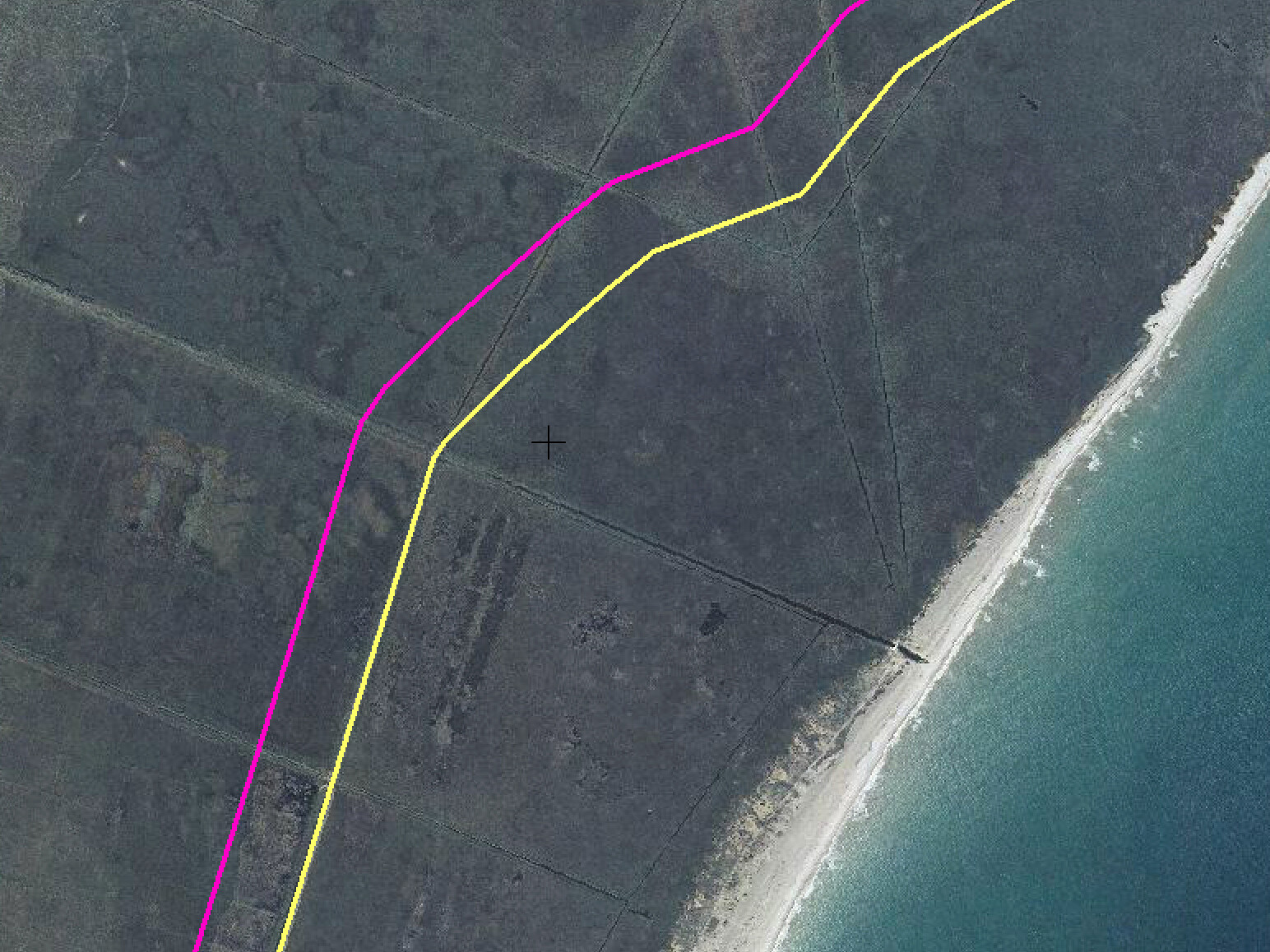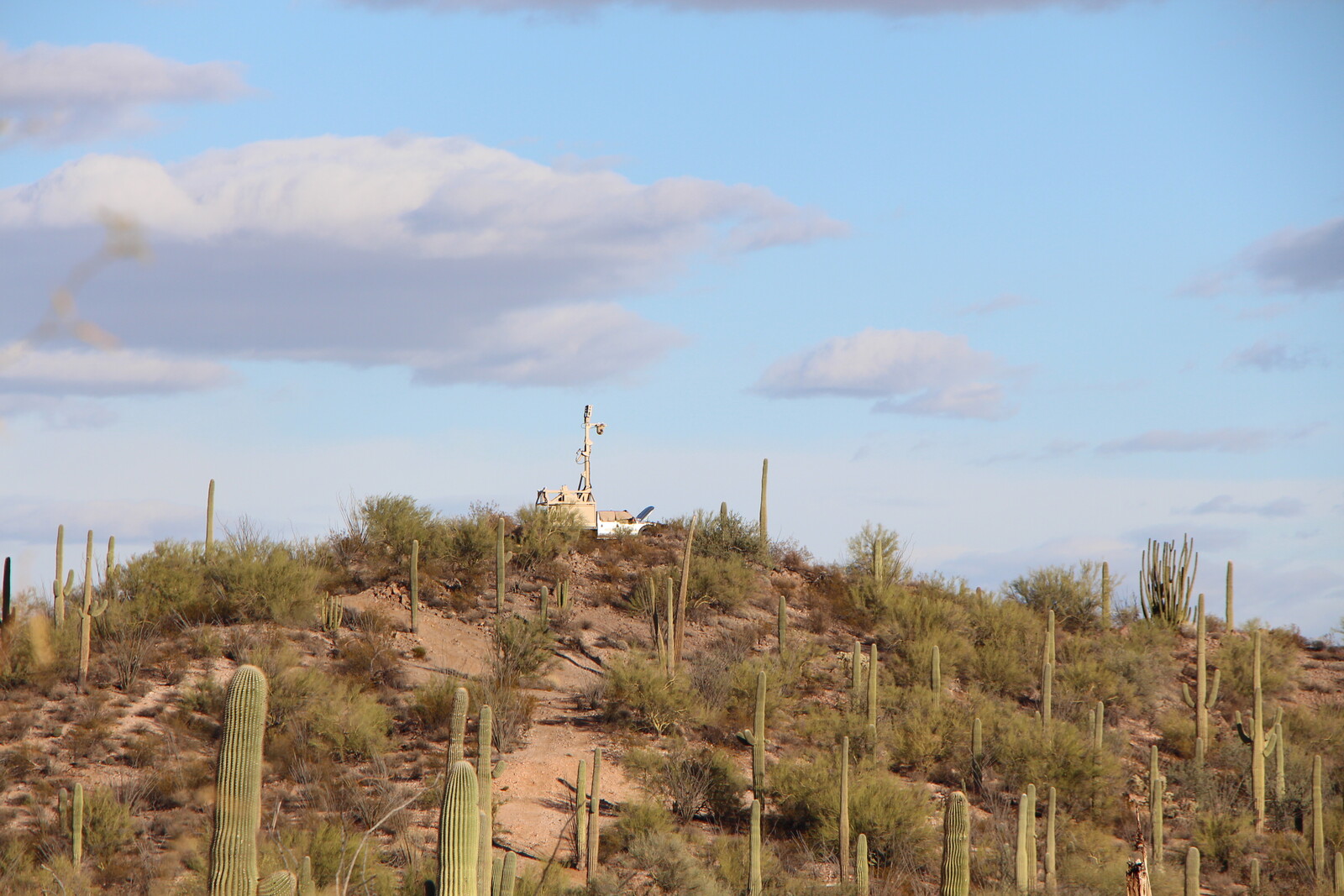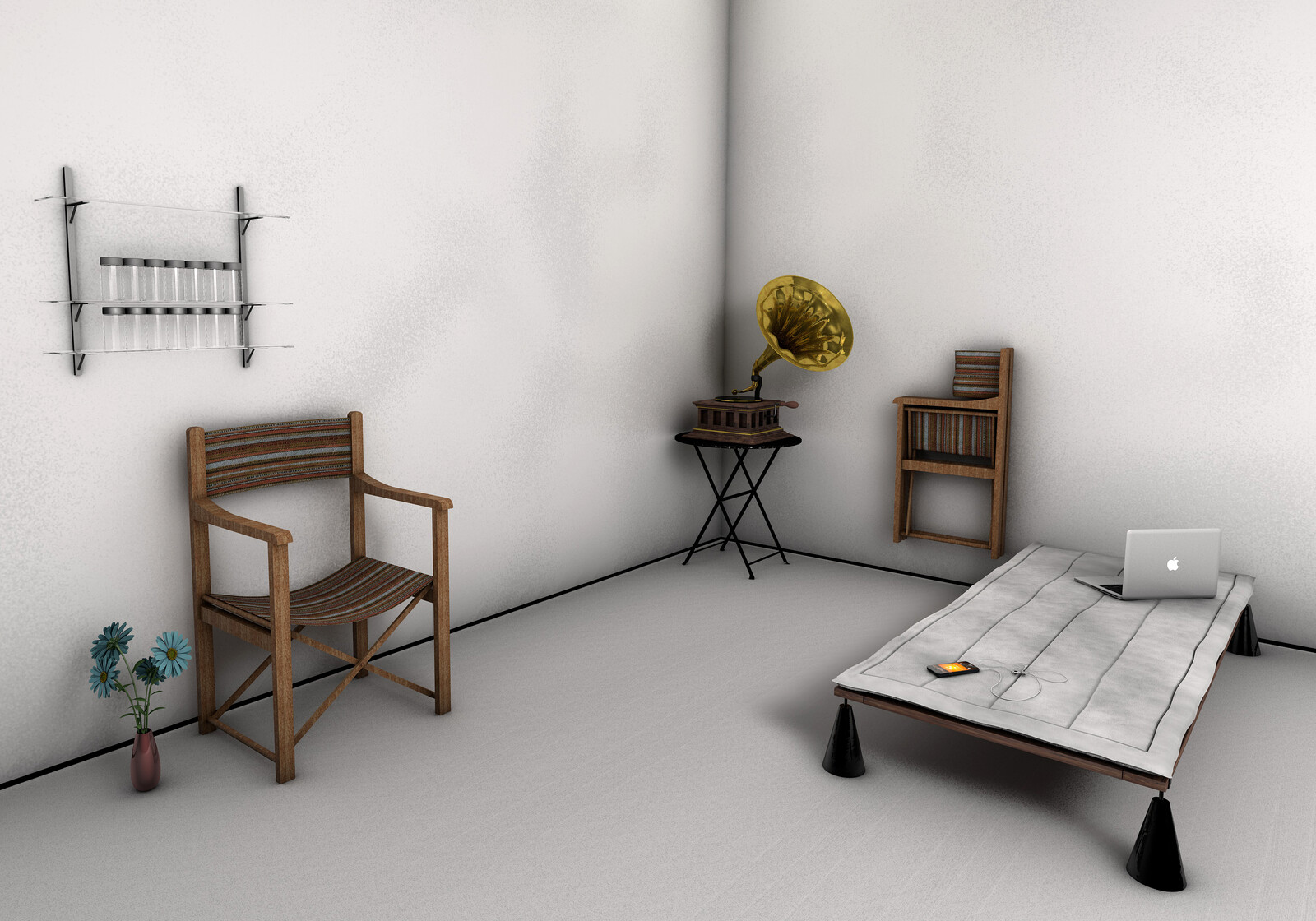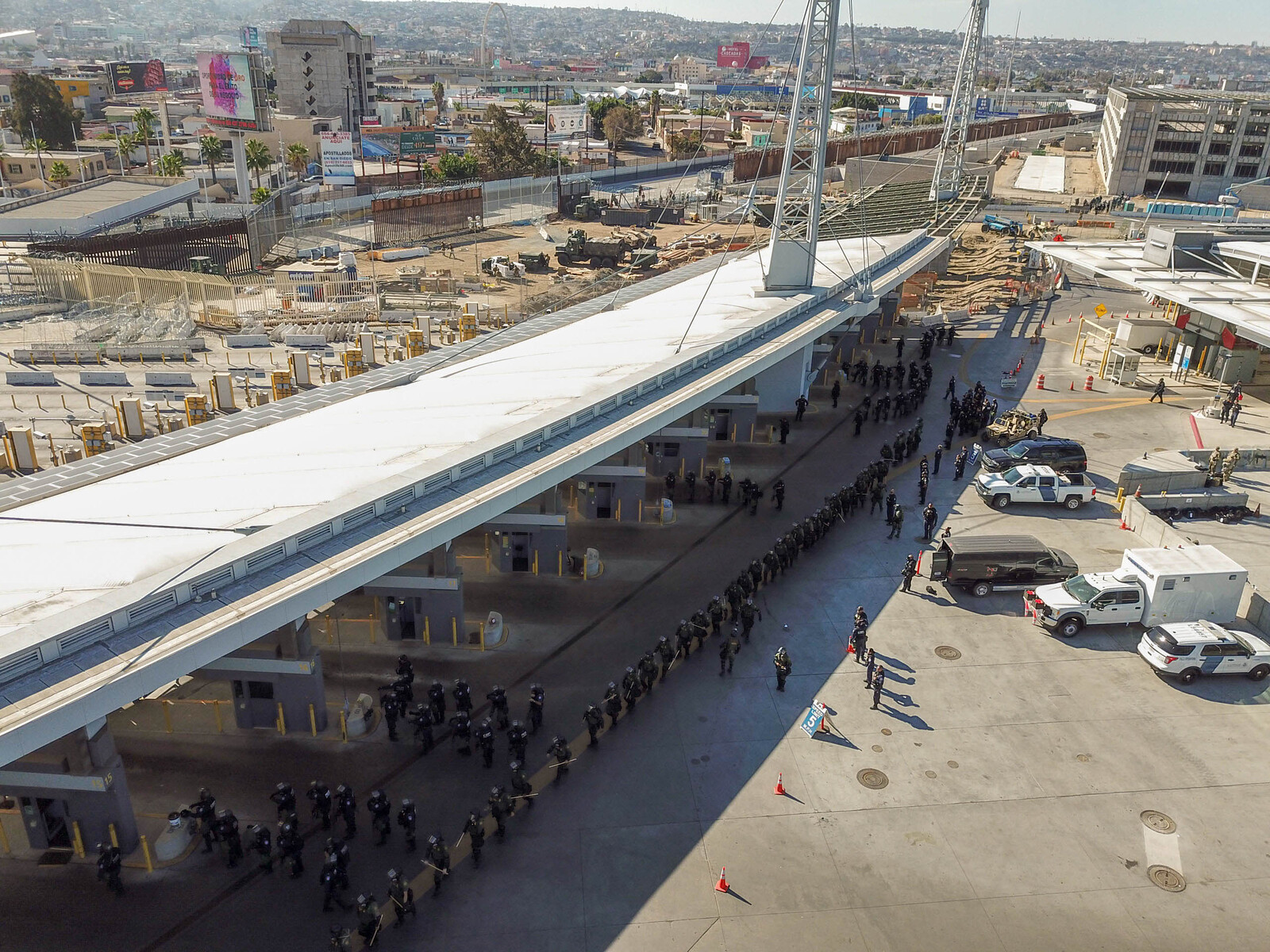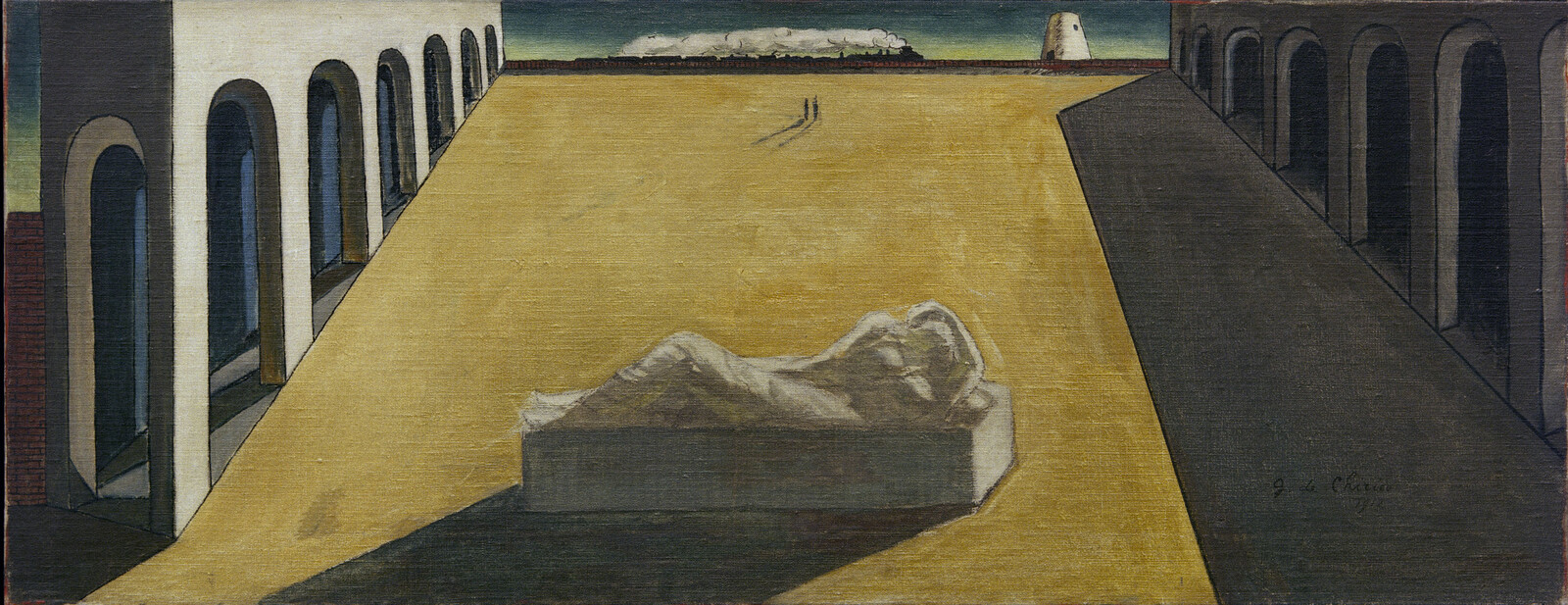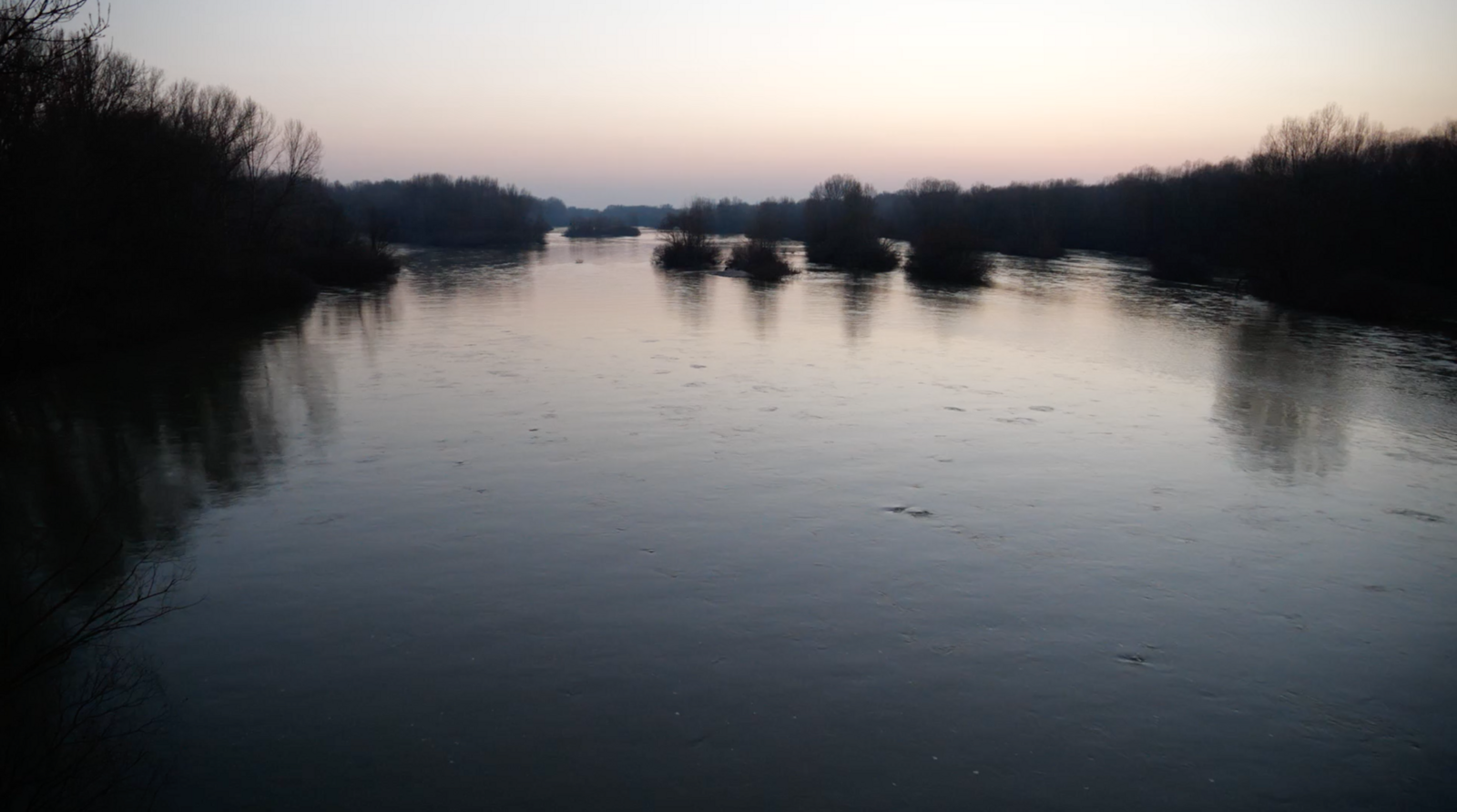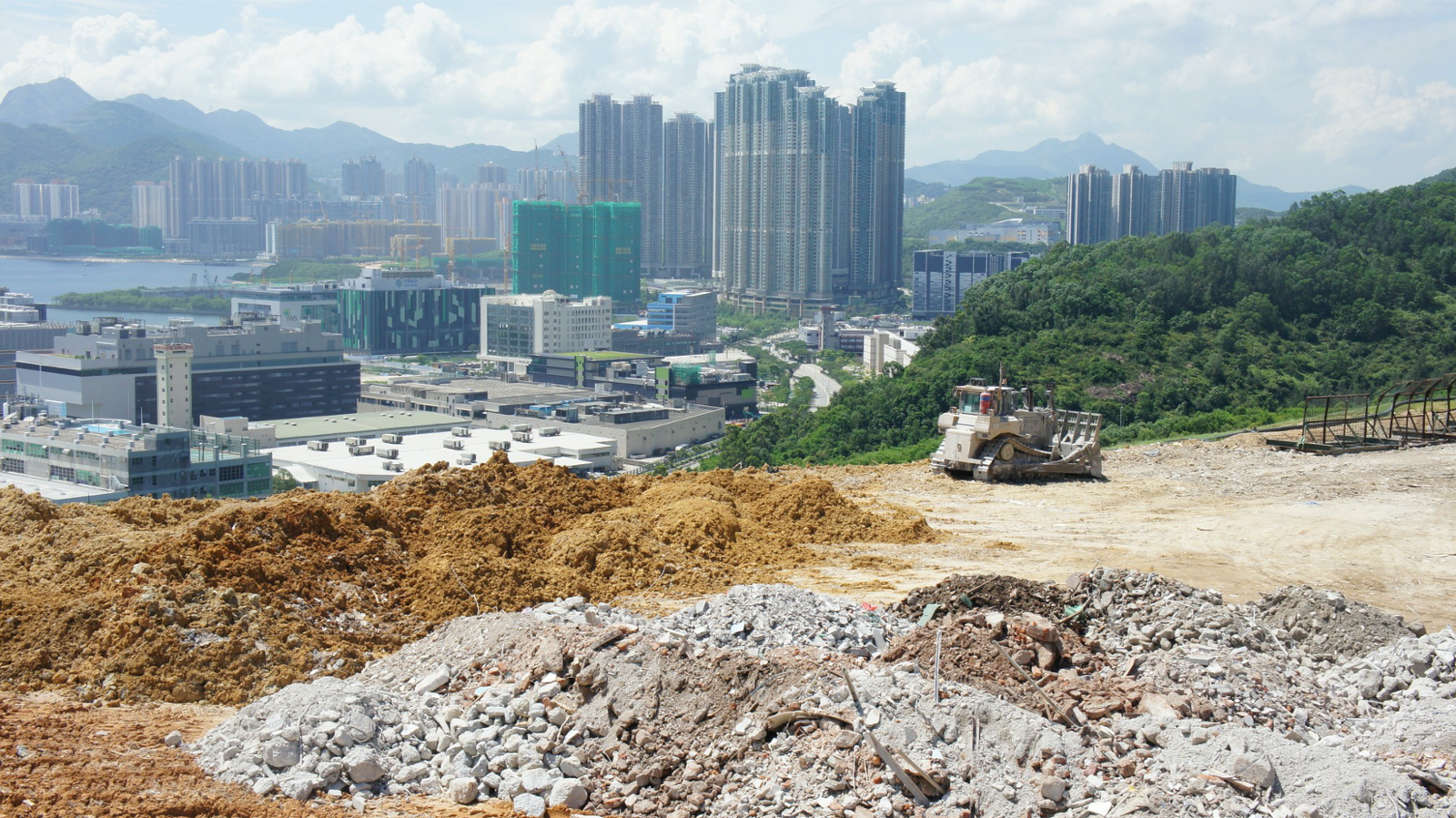At The Border is a collaboration between A/D/O and e-flux Architecture within the context of its 2019/2020 Research Program, featuring contributions by Andrea Bagnato, Tatiana Bilbao, Caitlin Blanchfield and Nina Valerie Kolowratnik, Theo Deutinger, Ifor Duncan and Stefanos Levidis, Daniel Fernández Pascual, Dan Fox, Cristina Goberna Pesudo, Lydia Kallipoliti, Mahmoud Keshavarz, Ersela Kripa & Stephen Mueller, Cindy Lin, MAP Office, Justin McGuirk, Brett Neilson, Kyong Park, Lorenzo Pezzani, Settler Colonial City Project, and Jason Waite.
As twentieth-century dreams of globalization continue shattering into the third decade of the new millennium, what we find in their wake are borders. Regardless of its scale, the border takes the self as its subject, defining it in relation to an other. Today, these borders are both physical and digital, geographical and political, all around and deep within us.
Since the start of the twenty-first century, the figure of the border has been “rediscovered” as an instrument of power and effectively deployed in political, geographical, and social discourses. Ramping nationalism and postcolonial fragmentations call for the erection of walls and other barriers, while echo chambers and spectacular media amplify latent prejudice and shape identities.
The idea of “border” is inevitably associated with the ambivalent concepts of belonging and exclusion, of freedom and constraints, protection and defense. In this sense, borders are not only symbolic, but also relational. Borders interpolate; they subjectivize. They are the locus of power, of the law; where the Westphalian nation-state concretizes its regime of terror; where the individual enacts its violence of community. And they are always, as Kafka suggested, “made only for you.”
Is a world without borders possible, or even desirable? Reflecting on the commandment to “love thy neighbor,” Zygmunt Bauman points out that the opposite—to love thy self—is a given, common among all living animals, and necessary for “staying alive and fit.” Yet much more than mere survival is at stake in the construction of borders. Borders are designed and defended to protect certain values deemed to make life worth living.
As capital and commodities continue to flow and bodies remain policed and controlled, new frontiers and thresholds lie ahead. Are these borders the borders we want, the borders we need? Certainly not. What we need is for the borders of tomorrow to be different than those of today. Borders are designed, as is the self that is subject to their power. The future of both borders and selves is less a question of eradication than transcendence.
At The Border is a collaboration between A/D/O and e-flux Architecture within the context of its 2019/2020 Research Program.
